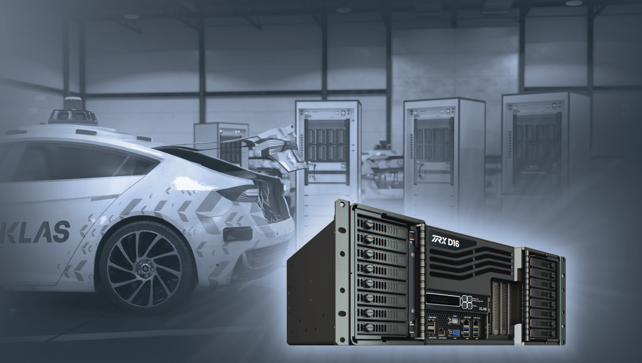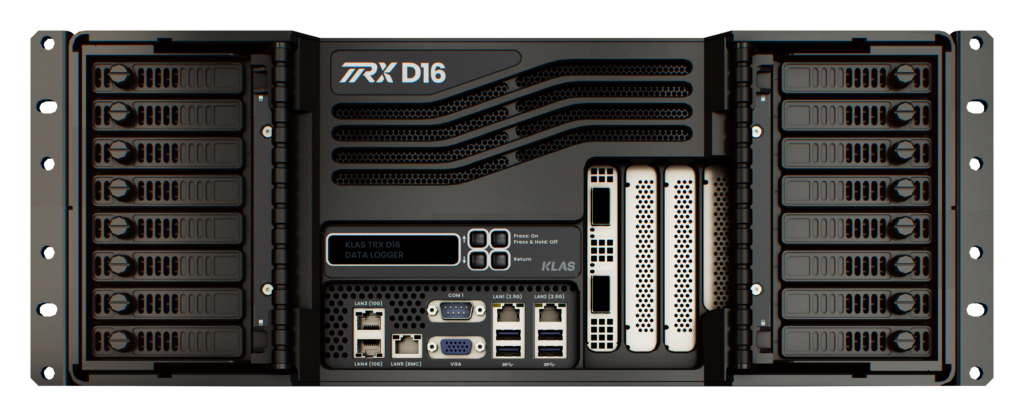
Level 4/5 Network-based data logging
HPC ADAS/AD Development Server and Vehicle Data Logging Platform
With TRX D16, automotive engineers gain a high-performance and customizable platform to accommodate the evolving vehicle sensor stack and support compute-intensive software development of AI/ML training, inference, and simulation. Furthermore, the platform delivers 200Gbps of sustained logging speeds with up to 480TB of data storage.



With an AMD EPYC™ CPU and NVIDIA GPU support deliver cloud scale performance for AI model training and inference. With up to 480 TB storage and multiple high speed interfaces, reliably capture and transfer data from the next generation of vehicle sensors for SIL/HIL testing.
- AMD EPYC™ 7713 processor (64 cores and up to 768 GB RAM)
- NVIDIA GPU (PCI-E Gen 4) support
- 200 Gbps (25 GB/s) sustained data logging speeds
- 480 TB of data storage (two hot-swappable storage cassettes)
- 2 x 100GbE high performance networking interfaces
- RAID (PCI-E Gen 4) card for data redundancy, encryption and offload
- Custom I/O of automotive Ethernet, FPGA based SmartNICs, or GMSL/FPD-Link/GVIF based cameras
- Open software architecture to support custom lab and in-vehicle development environmen
Benefits
Designed rugged with flexible chassis mounting options,
the TRX D16 is equally at home in the lab or on the drive from Level 3 to Level 5 autonomy.
Future Proofed
Open software architecture and custom interfaces to support existing toolchains alongside new cloud development environments.
Reduced Development Times
Eliminates disparate systems on the workbench. Seamlessly migrate software development evironments from the lab to the vehicle.
Secure
The highest level of compute security with TPM 2.0, support for the latest encryption algorithms to protect sensitive vehicle data.